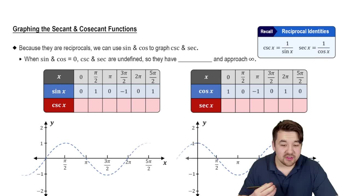Finding One-Sided Limits Algebraically
Find the limits in Exercises 11–20.
limx→1− (1/(x + 1))((x + 6)/x)((3 − x)/7)
 Verified step by step guidance
Verified step by step guidance Verified video answer for a similar problem:
Verified video answer for a similar problem:



 5:21m
5:21mMaster Finding Limits by Direct Substitution with a bite sized video explanation from Patrick
Start learning